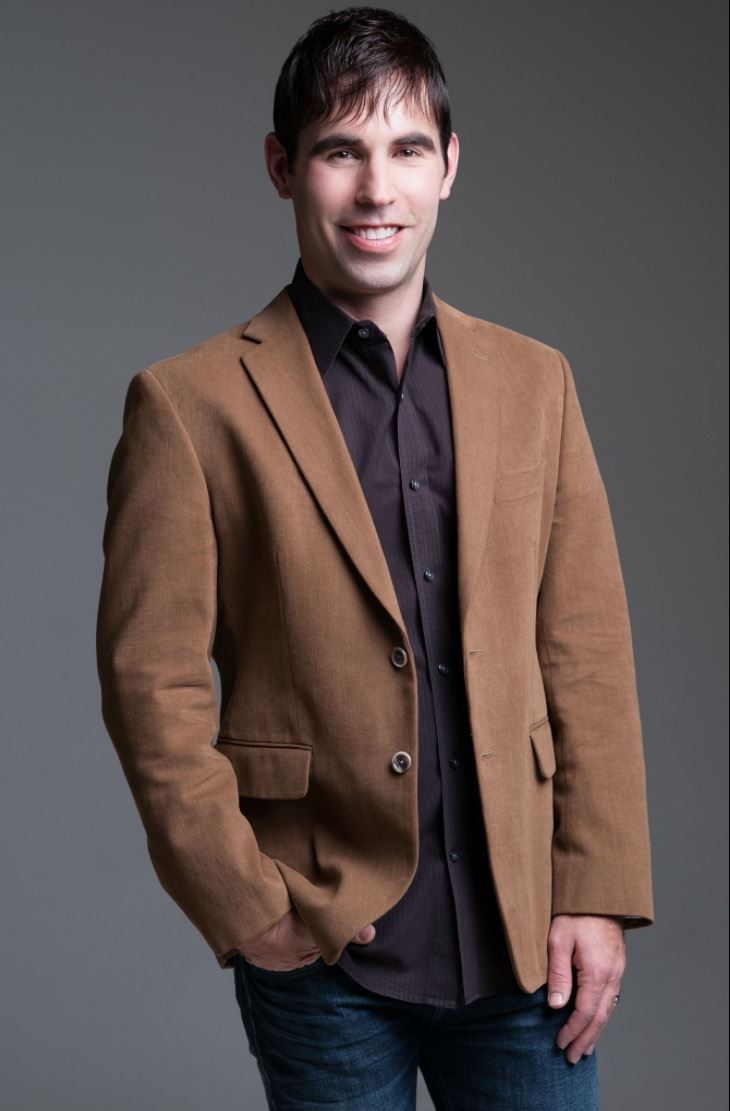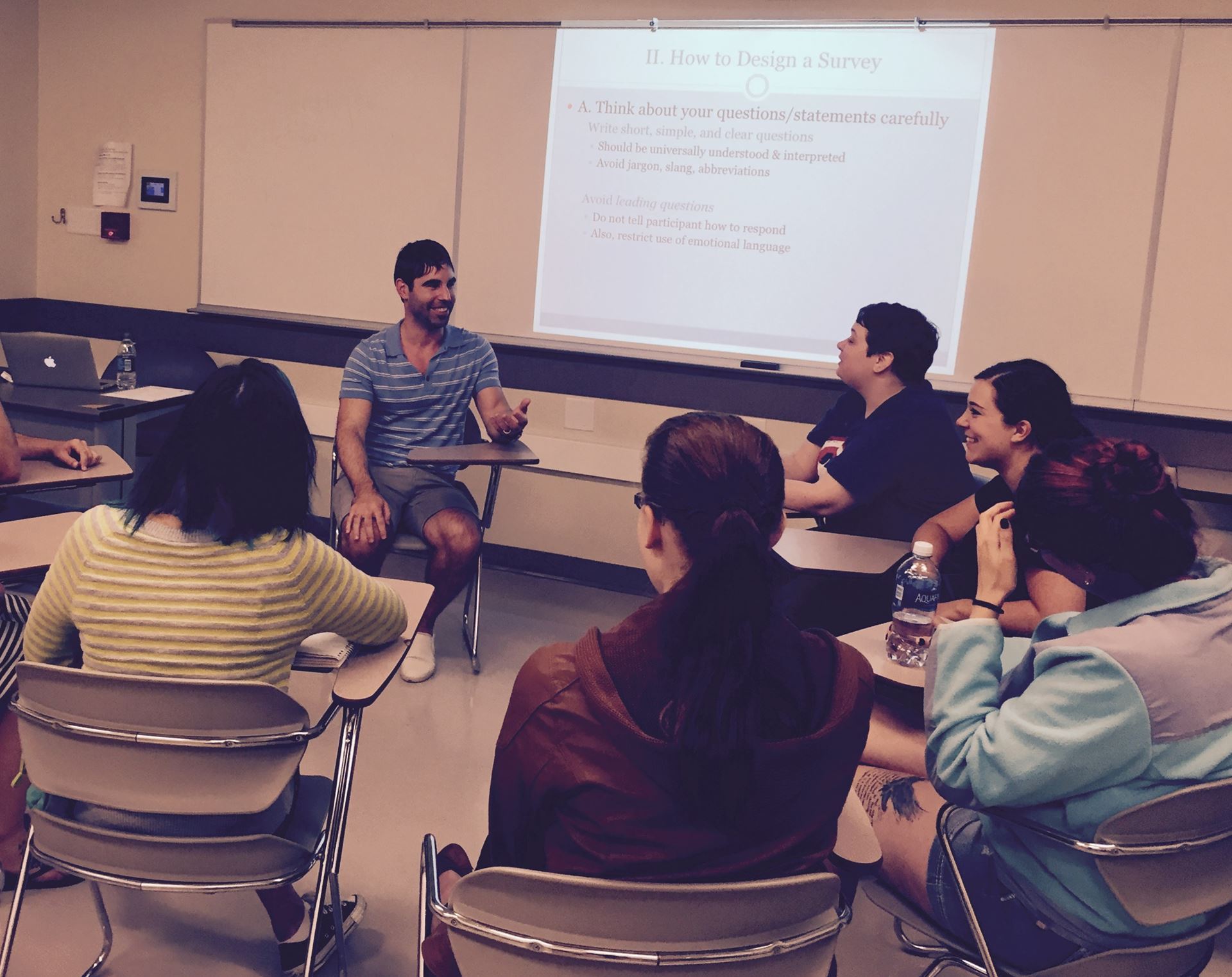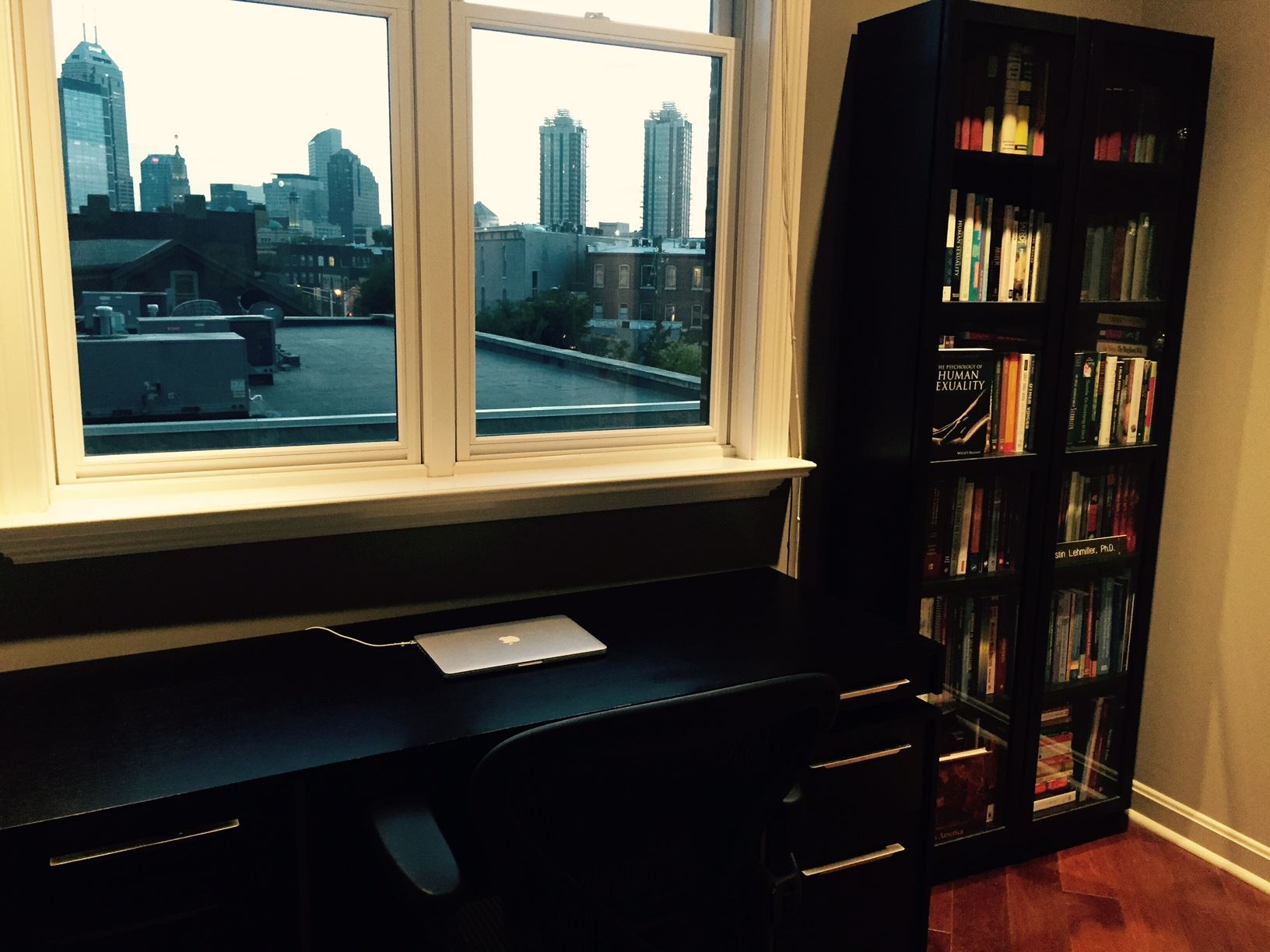 School name: Ball State University
School name: Ball State University
Type of school: Public research university
School locale: Ball State is in Muncie, Indiana, which is a relatively small town. I currently live in Indianapolis and commute to campus.
Classes you teach: I am the Director of the Social Psychology Master’s Program at Ball State and, right now, I primarily teach graduate courses related to social psychology. These include Advanced Social Psychology, Social Cognition, Attitudes & Persuasion, Intergroup Relations, and Counseling Applications of Social Psychology.
Average class size: Currently, the average class I teach has about 8-10 graduate students. However, when I used to teach at the undergraduate level, I routinely had classes of several hundred.
What book or article has shaped your work as a psychology teacher?
The biggest influence on my teaching hasn’t come from readings—it has come from experience. And I’ve been very fortunate to have had a very diverse teaching background. It started while I was a graduate student at Purdue University, where I funded myself partially by teaching small evening courses for continuing education students, many of whom came from non-traditional backgrounds. Upon graduating, I taught at an R1 institution (Colorado State) and in the Ivy League (Harvard), I taught at the graduate and undergraduate levels, my classes ranged in size from 5 to 250 students, I taught both online and face-to-face courses, and I worked with students who varied dramatically in their academic abilities and majors. To make a long story short, I’ve taught in quite a range of learning environments and have worked with students of vastly different backgrounds. The culmination of those experiences has helped me to develop a very flexible teaching style that focuses on adapting to the needs of the students in a given class. The most valuable thing I’ve learned is that there’s no such thing as a one-size-fits-all teaching strategy—the best teachers will adapt their approach to meet the needs of their students in each and every class.
 Briefly tell us about your favorite lecture topic or course to teach.
Briefly tell us about your favorite lecture topic or course to teach.
My favorite course to teach is Human Sexuality. I’ve taught it regularly over the last 10 years and I like it so much that I even wrote my own textbook on this topic entitled The Psychology of Human Sexuality (I’m currently at work on the second edition, which should be out next year!). I’m passionate about sex education because it’s a topic that far too many of us know far too little about. One of the things I like most about this course is that it provides students with a lot of practical information that they can use in their everyday lives; however, I also really like the fact that this course exposes students to a lot of new ideas and perspectives that many of them have never really thought critically about before. I’m humbled by the fact that so many students have told me that this class is their favorite course they’ve ever taken—and not just because it’s fun, but because they feel that it has truly had an impact on their lives.
Briefly describe a favorite assignment or in-class activity.
One of my favorite assignments is from my Human Sexuality course and it involves giving students the opportunity to immerse themselves in a sexually diverse environment. The goal is to expose them to some form of sexual diversity they do not have much familiarity with and write a paper detailing how it changed their worldview or perspective. This can take a lot of different forms. For example, a student who is unfamiliar with asexuality might spend an hour or two on the Asexual Visibility and Education Network website combing through the discussion forums. Alternatively, a student who has little familiarity with trans or sexual minority issues might attend an event that our local LGBTQ student organization is putting on. This is consistently my students’ favorite assignment of the entire class because immersive learning experiences like this help them learn things in a way that a book chapter or lecture can’t quite convey.
 What’s your workspace like?
What’s your workspace like?
I have a lot of workspaces. I alternate between working from home (either at the kitchen table or in my office), working in a coffee shop (you don’t want to know how many Starbucks rewards I’ve earned to date!), and working in my office on campus. I need the change of scenery—otherwise, I tend to get a little stir-crazy.
Three words that best describe your teaching style.
Enthusiastic, inclusive, conversational.
What is your teaching philosophy in 8 words or fewer?
Adapt to students’ learning style. Encourage critical thought.
Tell us about a teaching disaster (or embarrassment) you’ve had and how you dealt with the situation.
My worst teaching experience was my very first one. I was assigned to teach a Health Psychology course during the second year of my doctoral program and, not only had I never taught a college course before, but I had never even taken a Health Psychology class myself! Needless to say, I didn’t quite know what I was doing. Attendance dropped off a lot during the first couple of weeks and I became very concerned (and embarrassed). So, I took it upon myself to administer a survey of the students to see what I was doing wrong and how I could better meet their learning needs. I used that information to adjust my approach to teaching and found that attendance perked back up. In the end, I was able to salvage the course, but only because I took the time to gather careful feedback and really listen to what the students were telling me.
What is something your students would be surprised to learn about you?
One thing that always seems to surprise my students (and my colleagues) is that I don’t have my work email on my phone. I try really hard to have some degree of work-life balance and I find it’s impossible when you’re essentially carrying your work around with you at all times and allow it to interrupt you when you are out having fun or are on vacation. It’s important to be able to shut work off entirely sometimes to just relax and enjoy life. Some of the ways I like to enjoy life include travel (I visited four countries this past summer: the Netherlands, Italy, Spain, and Canada), learning how to cook multicultural dishes (my specialty is chicken tikka masala. I won’t lie—mine is pretty delicious), and Netflixing with my spouse (we’ve been together 17 years!) and our pup (an Australian Cattle Dog mix we rescued in 2005).
What are you currently reading for pleasure?
I don’t have a lot of time to read for pleasure, so when I do, I select my books very carefully. The most recent book I finished was Galileo’s Middle Finger by Alice Dreger, which was absolutely fantastic. It’s all about cases where science and politics collide and the potentially disastrous consequences that can occur. I ended up writing a review of the book on my blog and have been encouraging my colleagues and students to check it out ever since.
What tech tool could you not live without?
I need two: My MacBook Air and an internet connection. Not only do I do almost exclusively online research these days, but in my spare time, I run a blog, Sex and Psychology, which aims to educate the general public about the latest research on the science of sex, love, and relationships.
What is your hallway chatter like? What do you talk to colleagues about most (whether or not it is related to teaching/school)?
Donuts. Us Hoosiers love our fried food.
